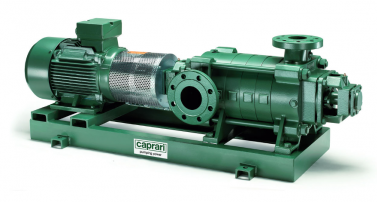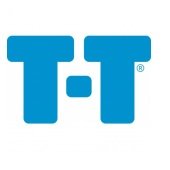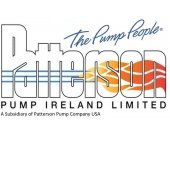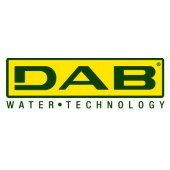Saving the higher cost of hire costs
 Adrian Megson, Business Development Manager for Pumps at ERIKS, explains how his company replaced a customer’s hired pump with a new electric alternative, bringing significant savings.
Adrian Megson, Business Development Manager for Pumps at ERIKS, explains how his company replaced a customer’s hired pump with a new electric alternative, bringing significant savings.
ERIKS’ customer, which operates in the heavy industry sector, used a diesel-driven pump to transfer effluent from a catchment lagoon to a treatment plant several miles away. The distance, the static head and the inherent frictional losses in the pipework mean that a high head pump is required.
Historically, two single-stage vertical Mather & Platt pumps were used: a duty pump and one on permanent standby. The age of the pumps and parts obsolescence also meant long lead times for replacement parts, which had to be specially manufactured.
The unreliability and high repair costs eventually drove the customer to take action. But rather than invest in a replacement pump with more efficient technology, they decided to hire another diesel-driven pump.
As a short-term solution, hiring a pump was better than nothing. But then the short-term lasted for eight years.
Unfortunately, these pumps required daily routine maintenance (refuelling and checking oil and coolant levels), which required a one- to two-hour shutdown every day. They were also notoriously unreliable. The high vibration levels inherent in a single-stage pump resulted in a short Mean Time Between Failure, as the pump virtually shook itself to death. In fact, the vibration was so bad it was impossible to mount the standby pump next to the duty pump – meaning more downtime whenever the pumps needed to be changed.
That was before ERIKS’ engineers identified the scale of the annual hire costs and diesel fuel.
When these figures were presented to the customer, it was obvious another solution was required, and ERIKS was tasked with finding a more cost-effective proposal.
In the face of ever-increasing diesel fuel charges, the first recommendation was to change to an electric-driven three-stage Caprari pump for far smoother and more reliable operation. This would not only reduce fuel costs but also eliminate the need for daily refuelling and other maintenance. With no need for daily shutdowns, the flow of effluent to the treatment plant would also be constant, making it easier to manage.
The final recommendation was to invest in not one but three of the new electric-driven Caprari pumps to provide a duty pump, a standby, and a spare.
With a more reliable electric-driven pump installed, a saving in maintenance costs and downtime was made every day. Electric power meant the customer also saw a saving on diesel fuel costs. And a saving in breakdown and repair costs was made, as the new solution extended the pump service life from six months to between three and four years.
Even based on fuel prices at the beginning of 2020, the customer was realising savings of £204,000 per annum on hire fees and diesel. And in line with the recent fuel price rises, those savings have hugely increased.
Repair or replace?
ERIKS always maintains a repair or replace neutrality – carefully and accurately costing both options and giving the customer a choice.
In this case, the cost of replacing the current solution with a new electric-driven Caprari pump and motor together was only the same as the cost of repairing the original Mather & Platt pump. Taking into account the savings on the hire of the temporary pump and the savings in labour costs for refuelling and other maintenance, the most cost-effective decision was obvious.
The customer made the right choice. And the savings compared with the original and the temporary pump are significant – and permanent. 
Back to Latest News







2.jpg&w=170&h=170)

1.png&w=170&h=170)

3.png&w=170&h=170)